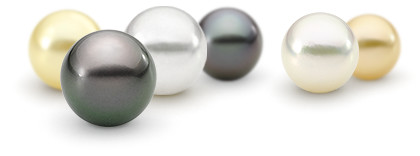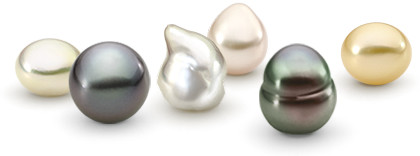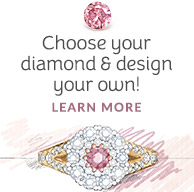pearl guide
Naturally stunning
A pearl is a living gem, each is unique. When you hold a pearl in your hand, it warms to your touch and exudes a luminous depth and radiance.
At Nina’s, we select pearls from the rarest and most valued pearls available, from Broome and the South Seas. They reflect the light of the sun, the glow of the moon and the beauty of the waters that nurture them into being.
Ancient Persians thought pearls were tears of the gods. Ancient Greeks believed they were created by moonlight on the water. To ancient Chinese, they guaranteed protection from fire. For Europeans, pearls symbolised modesty, chastity, and purity, and are still considered traditional gems for brides. Today, thanks to modern culturing techniques, pearls are no longer the sole property of royalty.
To describe a pearl, Nina’s uses five characteristics, we call the 5 S’s. Shine, Shade, Surface, Shape and Size.
Shine

Shine refers to the pearl's lustre or radiance.
It is the light reflected from or near the pearl’s surface, evaluated by the intensity and the sharpness of reflection. This is combined with its deep inner glow (iridescence). Pearls are made up of many fine layers of a crystal-like substance called nacre, secreted from within the living tissue of the oyster. The quality and thickness of nacre determines its radiance and light refracting between each layer of nacre affects its iridescence. All these elements are what makes this gem unique.
Shine has the magic to minimise other imperfections and is considered the soul of the pearl. A brilliant lustre will produce an almost mirror reflection. The more lustrous the pearl, the higher the value.

Shade
Shade is the varied colour range of pearls.
South Sea pearls are highly coveted for their rich colours. The species of oyster and the environment in which they grow are the main factors behind determining a pearl’s colour. Each pearl reflects colour in a different way – boldly on the surface or hinting at hues from within layers of nacre. Shade is a personal preference.
South Sea pearls belong to either a white, yellow or black range, but there is a wide variance in shade and hue possible within each range.
Surface

Pearls are a gift of nature.
Products of a living mollusc, with layers of lustrous nacre built up over time, a pearl with a flawless surface is extremely rare. The most beautiful and valuable pearls may still have slight imperfections which appear in the form of small blemishes. These natural ‘beauty marks’ characterise each pearl as an individual creation.
Shape
Every pearl is individual and unique.

With regards to shape, round is the most valuable with the more irregular shaped baroque being the least valuable.
ROUND These are shaped like a sphere. Very few pearls are perfectly round.
DROP Drop-shaped pearls include teardrop, oval and egg pearls, as well as the more unusual semi-drop and cone shapes.
NEAR ROUND These pearls are ideal for jewellery and strand making as they appear round once they're set.
BUTTON These can vary dramatically, and high button pearls are often very similar in shape to near round pearls.
BAROQUE The baroque pearl is the most individual South Sea pearl, with its irregular or free form shape.
CIRCLE A pearl with one or more parallel grooves etched around its circumference.
Size
Pearls are measured using a milligauge which can measure the pearl to within 0.01mm accuracy. They are also weighed using an old Japanese measure of mommes. One momme is equal to 3.75 grams or 18.75 carats. Quite simply, the larger the pearl, the greater the value.





The information below is required for social login
LOG IN
Create New Account